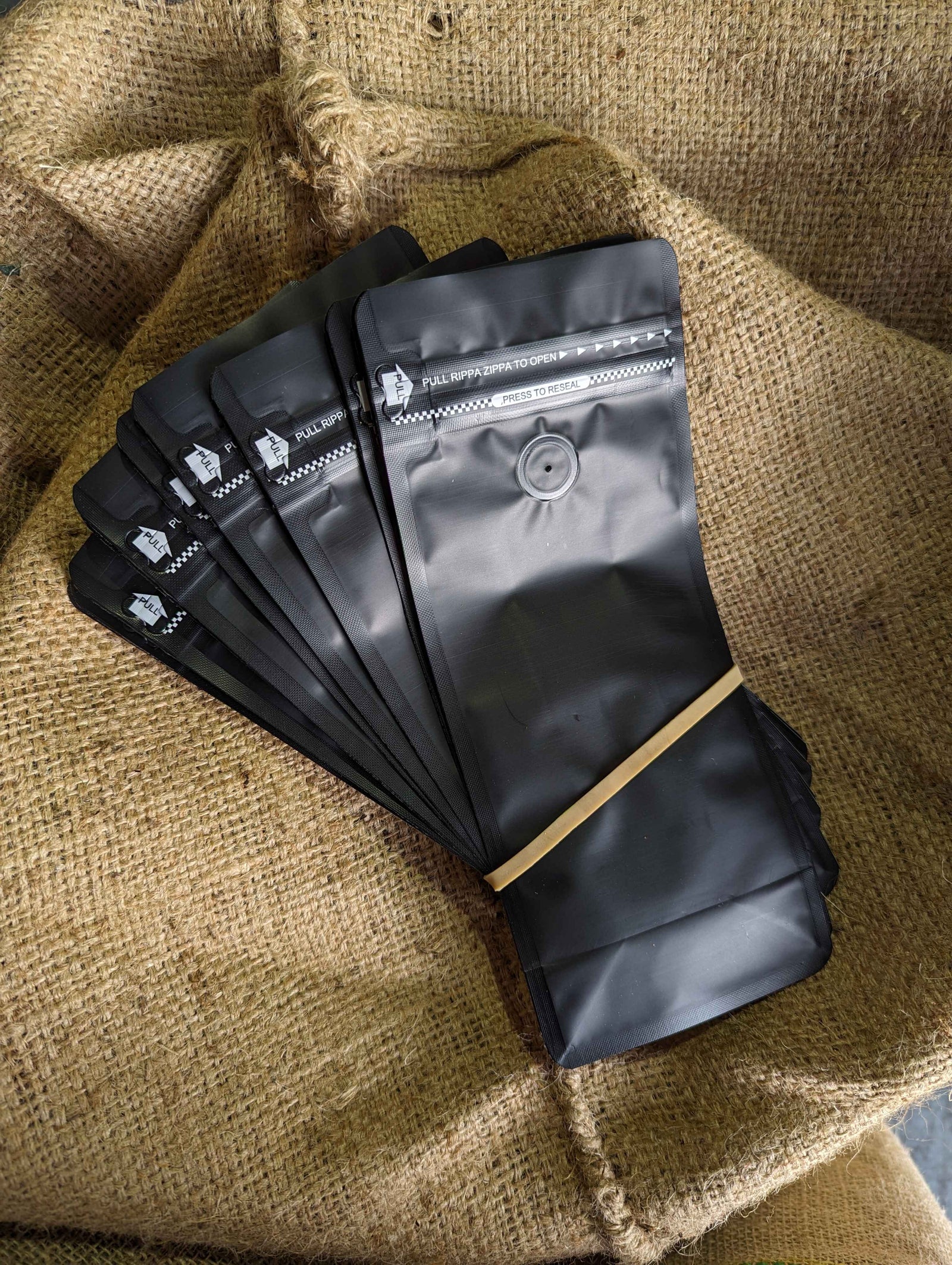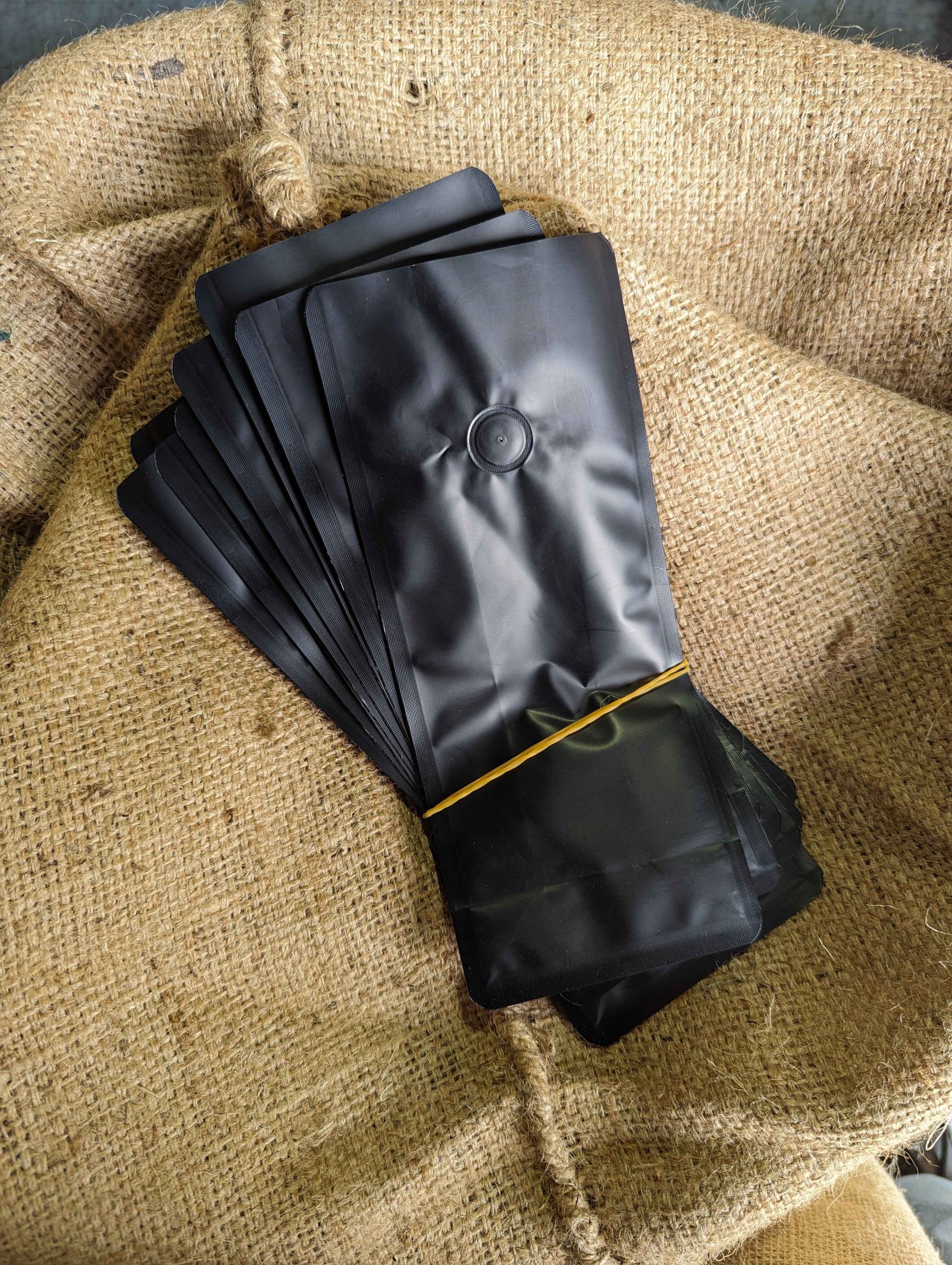OVERVIEW:
Step into a fascinating chapter of coffee history with India Arabica Monsooned Malabar – a uniquely processed coffee that delivers mellow, full-bodied flavours with a smooth, earthy character. This coffee style originated during the 19th-century spice trade, when beans shipped from India to Europe underwent dramatic changes during the six-month sea voyage. Today, that iconic transformation is replicated using monsoon winds on India’s southwest coast, producing a bold and distinctive cup with rich flavours and low acidity.
PRODUCERS:
Monsooned Malabar is produced by a network of smallholder farmers and estates across the coastal regions of Karnataka and Kerala. Most farms are under 10 hectares and cultivate Arabica under traditional shade-grown conditions. Common varieties include Catimor, Caturra, Kent, and S795, with many farms intercropping coffee with pepper, vanilla, and fruit trees for biodiversity and soil health.
ALTITUDE AND LOCATION:
Coffee for Monsooned Malabar is typically grown between 1,100 and 1,200 meters above sea level, in regions that benefit from ample rainfall and tropical humidity. These areas lie along the Western Ghats – a UNESCO World Heritage-listed mountain range that creates the ideal environment for monsooning. The bulk of production comes from the Malabar Coast, which lends the coffee its name.
PROCESSING – MONSOONED:
After harvesting and initial drying, green coffee is stored in open-walled warehouses during the monsoon season, where it is exposed to warm, moisture-laden winds. Over 12–16 weeks, the beans swell, pale in colour, and absorb ambient moisture, triggering complex chemical changes that soften acidity and create the signature flavour profile. The coffee is regularly raked, turned, and rested to ensure even exposure before being carefully hulled and graded.
HISTORICAL CONTEXT:
Monsooned Malabar traces its origins to the days of wooden ships and imperial trade. In the 1600s, Muslim pilgrim Baba Budan is said to have smuggled seven coffee seeds from Yemen to India, planting them in the Chandragiri Hills of Karnataka. By the 19th century, Indian Arabica – then branded as “Mysore” coffee – became the preferred brew across Europe. As shipping times shortened with modern vessels, Europeans missed the smooth, mellow flavour the coffee developed at sea. The modern monsooning technique was born from this demand, preserving a legacy of colonial trade and cultural adaptation in every cup.

 Matte Black Coffee Bag Bundle - With Valve & Rippa Zippa
Matte Black Coffee Bag Bundle - With Valve & Rippa Zippa Matte Black Coffee Bag Bundle - With Valve
Matte Black Coffee Bag Bundle - With Valve






